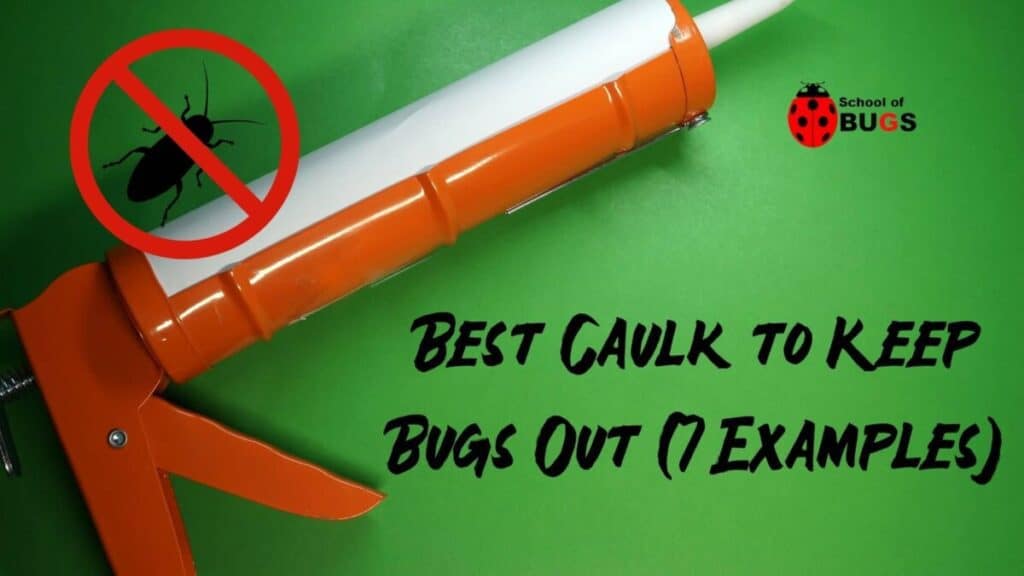
Are insects finding their way inside your house? In most cases, they get in through tiny cracks in your walls.
Luckily, you can easily solve the problem with an affordable sealant you can find in your local store – caulk.
Caulk is a flexible glue used to seal cracks and gaps between concrete and other construction materials. It’s super easy to apply and dries down rather fast.
In this article, we’ll talk about how this simple sealant can solve all your bug issues, with examples of places around your home that need to be checked for potential sealing.
What Type Of Caulk Is Best For Pest Control?
You’ve probably noticed there are different kinds of caulk out there. The question that naturally pops up is “which caulk is the best for keeping the bugs away?” But the answer depends on where you’re using it.
Silicone caulk is transparent, so you can use it on the already painted surface.
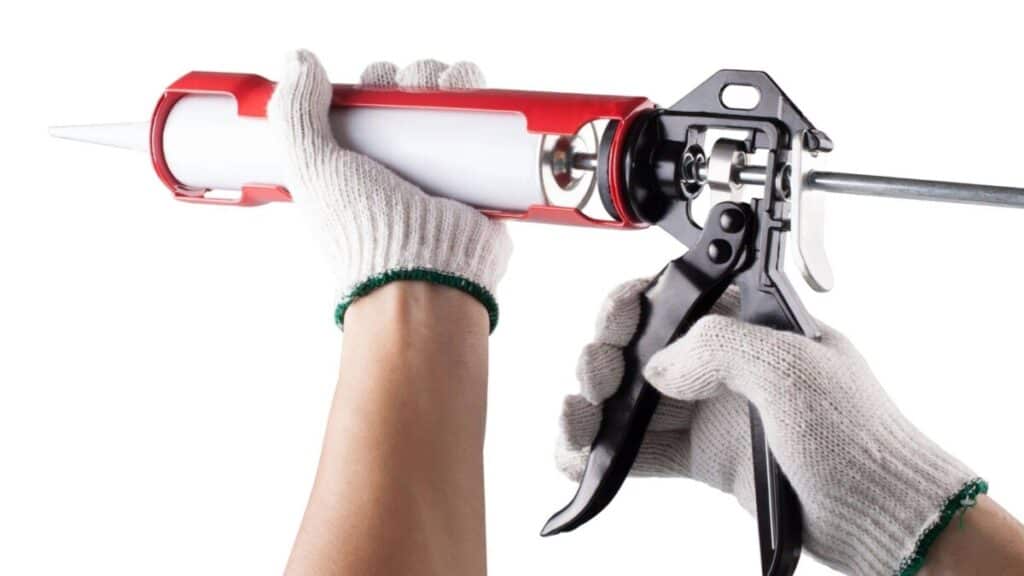
And since it’s water-resistant and non-organic, it won’t wear down from exposure to weather elements or extreme temperature changes. Plus, the joint sealed with this type of caulk can hold up to 20 years!
However, silicone caulk doesn’t work on wood surfaces. What’s more, it doesn’t bond with the paint, so it’s not great for sealing the cracks on the walls you’re about to paint.
Polyurethane caulk is also water-resistant and stands well against weather elements. It adheres well to most surfaces, including wood, and can last a pretty long time.

The commercial grade of this type of sealant is used for construction, road building, and engineering. However, polyurethane caulk is more expensive than the other alternatives.
Finally, latex caulk is also worth mentioning. It’s easy to both apply and remove, and you can paint over it.
This type of caulk is great for small holes in visible places but doesn’t have the holding power of the other two types mentioned above.
How To Keep The Bugs Out Using Caulk?
Now that you know the different types of caulk you can use, let’s see how to use them to keep the insects away.
#1 Caulk The Cracks In Exterior Walls
The line of defense should start from the exterior walls of your house. Pay special attention to the walls on the not-so-sunny side.
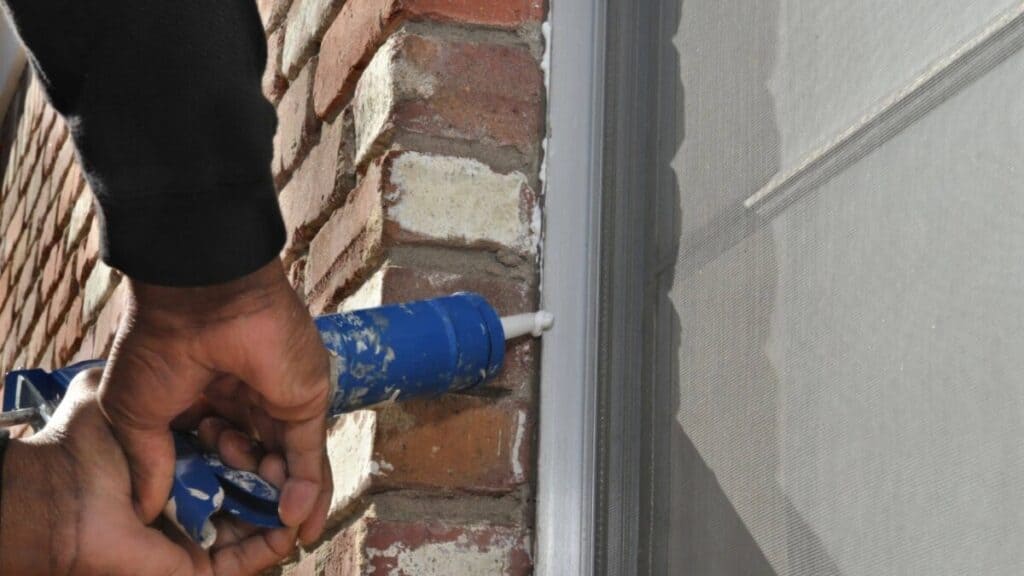
When it rains, water gets inside even the tiniest cracks and gaps in the concrete. But because these walls aren’t exposed to the sun for too long, they might not dry as fast as they should.
If the walls are still wet and the temperature drops low, the droplets inside the cracks will expand and further extend those holes.
For filling these open cracks on your exterior walls, it’s best to use polyurethane caulk. This type of caulk is moisture and corrosion-resistant, so you don’t have to worry about weather elements destroying your hard work.
You can easily close up gaps that are up to ¼ inch wide without using a backer rod or any other type of product that helps with sealing the gaps.
#2 Check Your Basement
If you own a basement, you should definitely give it a thorough check for openings in the walls. Depending on the frequency of upkeep, there might be quite some work to be done there.
Especially where the walls meet another surface, such as wood paneling and bricks. After some time, cracks appear in these places.
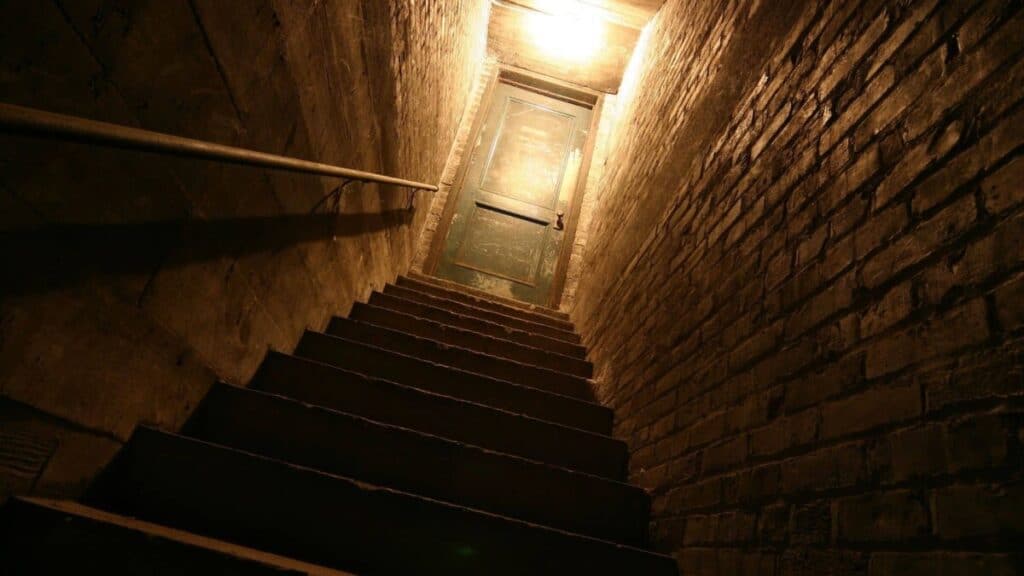
Of course, the exterior walls are the most important, as that’s where the bugs enter your home. Start by looking for signs of light coming through the walls.
It’s important to seal these cracks from both inside and outside the house. The reason you should do that is that walls can become quite porous over time.
So if you seal the crack from the inside, but water gets from the outside, it will expand the hole and create an opening for bugs to get in.
#3 Fill Up Gaps In Baseboards
Tiny cracks and gaps around the baseboards are one of the most common entryways for bugs like ants to get inside your house.
What’s more, insects can also use these spaces to build their nests and stay away from the radar as much as possible.
To keep the bugs away, you should caulk all the edges out. By this, we also mean the space between the floor and the baseboard.
This doesn’t just prevent bugs from entering but also improves the water permeability of your floor.
Things get trickier if you have a carpet installed. This means you’ll have to pull the carpet away to apply the caulk. When doing this, be extra careful to avoid hurting yourself with carpet tacks.
#4 Seal Down The Walls
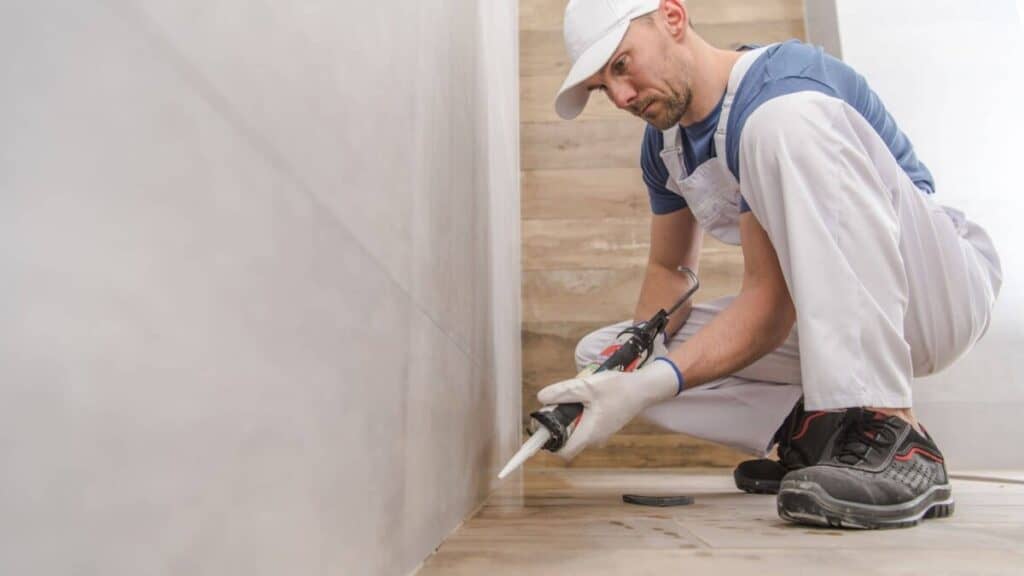
The edges of the walls might appear perfectly sealed, but these are not the only places bugs can get through.
First on the list of troubles is wallpaper. Most modern wallpapers peel away from the walls over time. All of these loose sections are the perfect location for bugs to hide in.
To solve the problem, apply caulk under the wallpaper, then smooth it back against the wall. But to be extra sure, you should apply another bead of caulk along the seams of the wallpaper.
This should prevent it from peeling again.
But even wallpaper-free walls aren’t free of bugs. Even a tiny nail hole can be a good hideaway for all kinds of insects.
But because these areas can be quite visible, make sure to use latex caulk to fill in holes in the walls. Latex caulk is easy to clean up with water, so you can smooth out the surface after sealing.
What’s more, latex caulk is also paintable, so you can hide the visible cues easily.
#5 Don’t Forget The Outlets
If there’s any air leak around the electrical outlets, then those gaps can also be an entryway for all kinds of bugs.

Plus, even a small draft can cause your house to be a bit cooler in winter and hotter in summer, ultimately leading to increased heating and cooling costs.
Of course, before you start working around the outlets, make sure the power is turned off completely. The last thing you want is to get electrocuted while working on pest control.
Once you’re sure there’s no power, remove the cover plate. If the gap between the electrical box and the wall is smaller than ¼ inch, you can fill it with just caulk.
If it’s bigger, you’ll also need foam sealant to help you seal the opening.
#6 Check Kitchen Cabinets
The kitchen is the perfect place for all kinds of insects to make their home. The source of food is near, it gets hot and moist whenever you’re cooking, and most importantly, there’s plenty of space for bugs to hideout.
One of the less obvious ones is behind your kitchen cabinets.
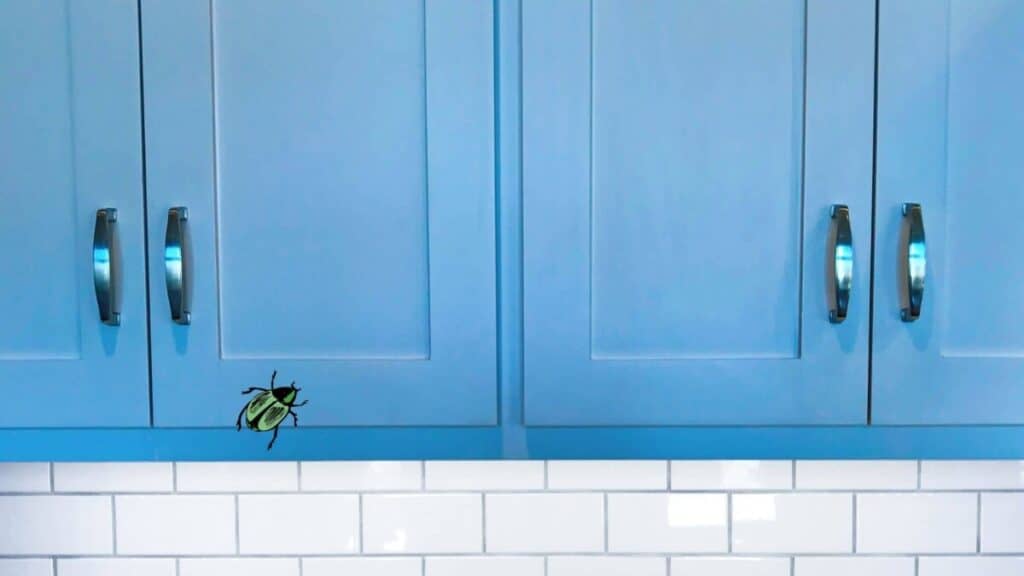
When you think about it, it makes sense for insects to hide out there. While you might open and close the cabinet doors a hundred times a day, you don’t move the whole thing.
Cabinets are attached to your walls, and those tiny holes through where the screws go are potential entryways. The same goes for an electric hook-up for the stove hood and under-cabinet lights.
While you can’t exactly glue the cabinets to the walls, you can caulk their edges to prevent bugs from hiding behind them.
In most cases, the cracks are small enough for using caulk only. But if there are spaces bigger than ¼ inch, you should use expanding foam for those areas.
#7 Seal Around Plumbing
Last but not least, check out the plumbing in your house. Insects like cockroaches and silverfish love to hang around moist areas, so these are the places where you’ll most likely find them.
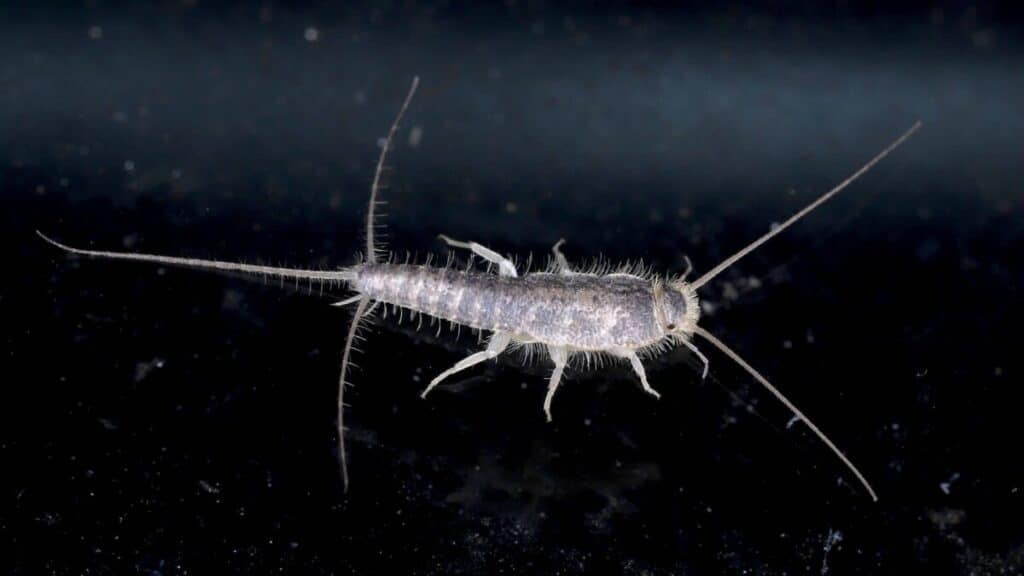
Of course, you can’t close down the drain entirely as a pest control method, but you can prevent bugs from entering other places.
First, ensure all the places where plumbing meets the walls are properly sealed without tiny cracks. Move the metal flanges at the base and caulk around the pipe.
It may not be necessary, but it’s better to be safe than sorry.
Moving onto the bathtub. Before you start applying, it’s important to get rid of the old caulk. Removing it can be tedious, but you should do it, as there could be bacteria hidden inside.
And if you apply a new layer without removing the old one, there’s a good chance of getting mold over time. Seal the crevices where it meets the walls as well as the floor and baseboards.
For this, it’s important to use silicone caulk as it’s waterproof.
Finally, make sure the base of your toilet and sink is properly sealed. If not, apply a layer of caulk there as well.
This not only will prevent insects from getting in, but also keep water and other liquids from getting underneath the toilet.
Conclusion
Even the tiniest crack in the wall can be a grand entrance for all kinds of insects into your home. Luckily, caulk is an affordable and easy-to-apply product that you can find in pretty much every store.
Alright, that’s it for this article, here are a few hand-selected articles that you might also find interesting reads:
How to Stop Bugs from Coming Through Window Air ConditionerWhat Can I Put on My Windowsill to Keep Bugs Away? (Three Minute Read)
How to Keep Bugs Out When Door Is Open (3-Minute Read)
Recent Posts
Tiny Black Bugs in Bathroom NO WINGS: What They Are and What to Do!
Finding tiny black bugs in your bathroom can be uncomfortable, to say the least. Especially if they are persistent, or they appear in very large numbers, which they often like to do. When it...
Tiny Black Bugs in Plant Soil - What Are They & What To Do About It
A short horror story: You get a new houseplant. You do your best to take care of it. You’ve ensured that it has the right soil, the right amount of sun, it gets enough water. And then one day, you...

